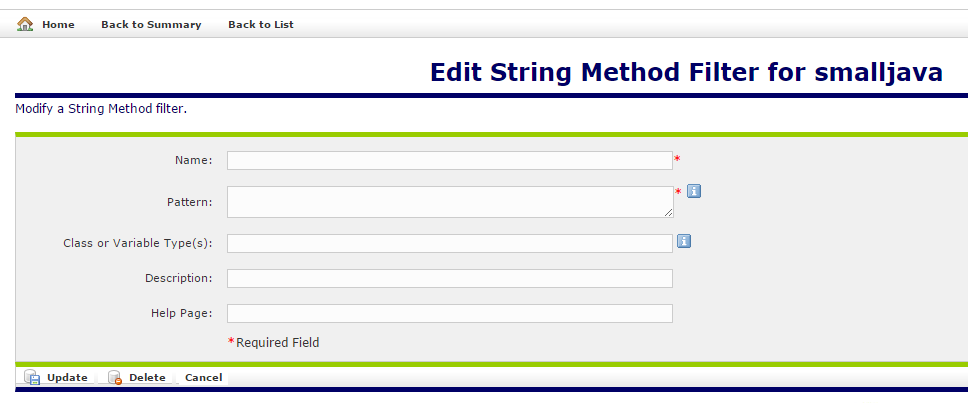Difference between revisions of "Globalyzer 5 Java Rules"
(→User Interface) |
(→User Interface) |
||
| Line 2: | Line 2: | ||
= User Interface = |
= User Interface = |
||
| − | [File:RS with Class or Variable Type.png] |
+ | [[File:RS with Class or Variable Type.png]] |
= Type of Rules = |
= Type of Rules = |
||
Revision as of 15:31, 27 October 2015
Contents
Introduction
User Interface
Type of Rules
Example
Code Snippet
import company.util.Dbg; // A fully qualified class name
import company.project.*; // Label is in the company.project package.
[...]
Dbg dbg = Dbg.getInstance();
Label lbl = new Label();
[...]
dbg.setText("{0}: {1} action taken.");
[...]
label.setText("Menu");
This snippet of code does have strings.
The class company.project.Dbg is a debug class and the text method puts the String parameter into a database for support purposes. That string is not visible to the end user. In that instance, the setText method on a variable of type company.project.Dbg should be filtered.
The variable lbl of class company.project.Label represents a text area in the User Interface and the setText method passes a user visible string. The string Menu passed to this setText method should be flagged: It needs to be externalized out of the code into a resource bundle.
